![]()
![]()
![]()
Use LEFT and RIGHT arrow keys to navigate between flashcards;
Use UP and DOWN arrow keys to flip the card;
H to show hint;
A reads text to speech;
16 Cards in this Set
- Front
- Back
- 3rd side (hint)
|
Green stick fracture |
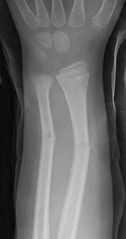
Common in young bones that are not fully ossified. Bone bends and cracks but doesn’t break into two seperate pieces |
|
|
|
Transverse fracture |
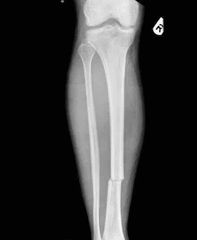
Occurs transversely through bone Reduction is simple and is unlikely to become redisplaced |
|
|
|
Spiral fracture |
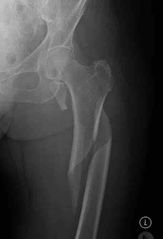
May require bone to be twisted in the opposite direction of the force Easily displaced Can be pinned and plated to prevent this |
|
|
|
Comminuted fracture |
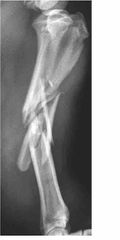
Bone is broken, splintered or crushed into several pieces Usually require surgery to reduce the fracture with rods/plates and place fragments |
|
|
|
Compound fracture |
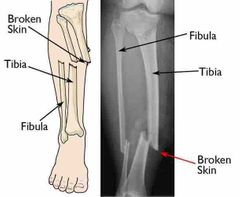
Open fracture where bone ends have punctured the skin High risk of infection |
|
|
|
Compression fracture |
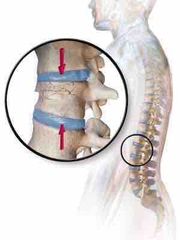
Where spongy bone is crushed Common with osteoporosis Reduction is difficult as trabeculae form cannot be fully restored |
|
|
|
Depressed fracture |
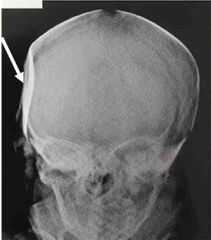
Where bone is pushed eg in skull Reduced by surgery and often plated |
|
|
|
Classification of fractures |
Position of bone ends: displaced/non displaced Completeness of the break: of bone is broken or not Orientation of the break: linear/transverse Penetration of the skin: open/compound or closed/simple |
|
|
|
Aetiology (cause) of fractures |
When the bones ability to absorb tension, compression or shearing forces is exceeded Trauma: direct or indirect violence Fatigue fracture: from repeated stress Pathological fracture: caused by an acquired disease |
|
|
|
Bone repair stage 1 |
Haematoma formation: blood clots at fracture site. Becomes swollen, painful inflamed |
|
|
|
Bone repair stage 2 |
Fibrocartilagenous callus formation |
Fibroblasts and collagen fibres span the fracture Osteoblasts begin to form spongy bone This mass acts as a splint in the fracture site |
|
|
Bone repair stage 3 |
Bony callus formation: gradually converted into a bony callus of spongy bone |
|
|
|
Bone repair stage 4 |
Bone remodelling: excess material is removed and compact bone laid down to reconstruct shaft. |
|
|
|
Bone repair effectiveness |
Works well in children Rarely perfect in adults |
|
|
|
Treatment outcomes |
To relieve pain, reduce(maintain good position of the bone), allow healing and restore optimal function In terms of OT: help achieve maximal function and return to roles and occupations ASAP |
|
|
|
OT treatment |
ADL assessment/ retraining Specialised equipment prescription Education Splinting ROM Pain management ACC training Mobility/transfers Transport |
|

